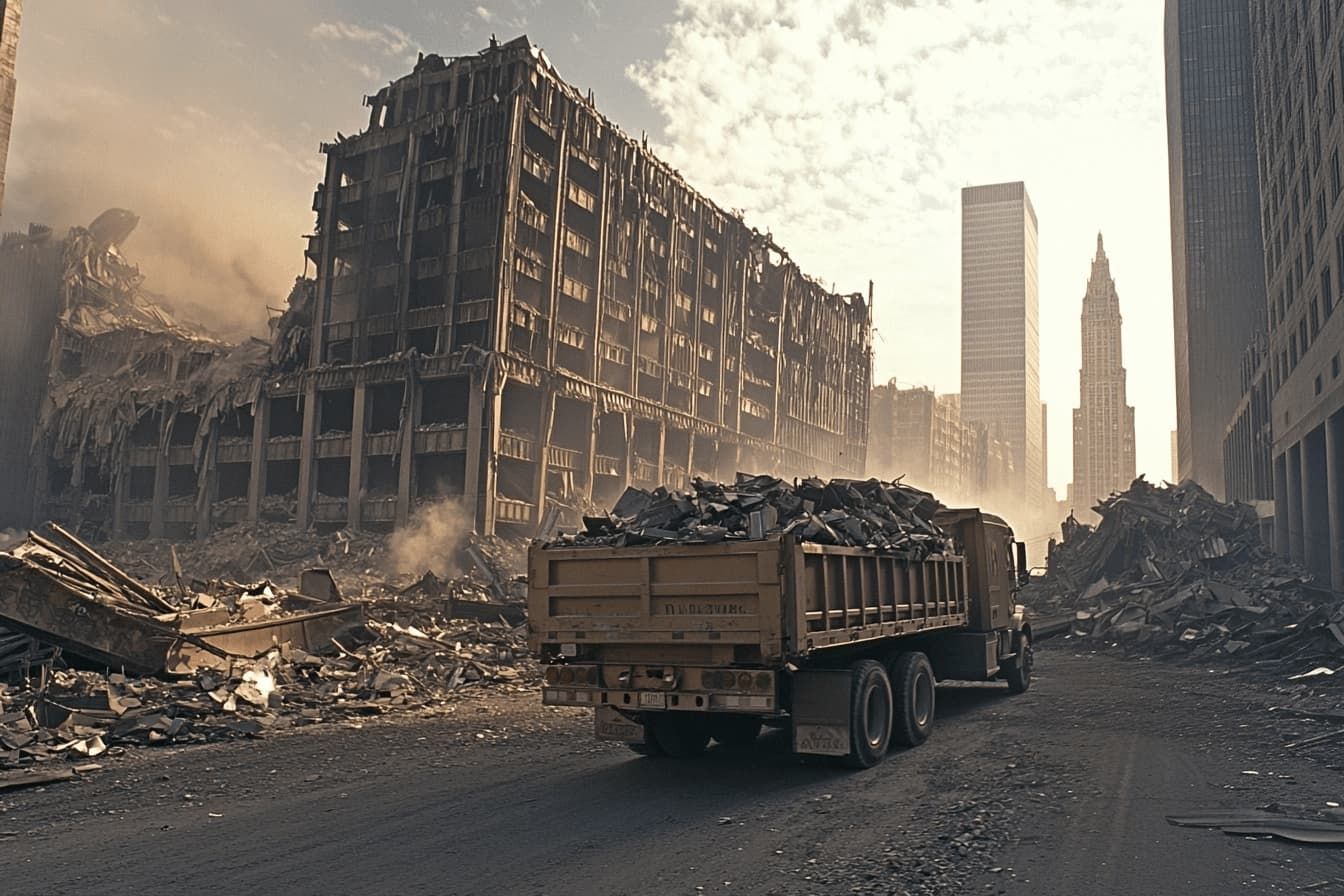On September 11, 2001, the terrorist attacks shocked the world and led to the catastrophic collapse of the Twin Towers of the World Trade Center (WTC). The former heart of New York City, with heights of 417 and 415 meters, was now just a pile of rubble. The recovery and disposal work presented a huge logistical challenge, both human and material.
The dimensions of destruction
In total, about 1.5 million tons of debris were removed from Ground Zero - a massive amount of concrete, steel, glass and plastic. Work began immediately after the attacks and lasted from September 2001 to May 2002. Originally it was planned that clearing the rubble would take two years, but the smooth logistics behind this project enabled the work to be completed in less than a year - one impressive performance. The enormous amounts of rubble had to be carefully sifted through to separate building rubble from human remains. The remains of the destroyed buildings and the victims found a temporary home at the Fresh Kills landfill on Staten Island, which was briefly reopened
Recycling and reuse
A notable portion of the steel beams from the Twin Towers were melted down and used for new projects. Of particular note is the USS New York, a warship built with 6.8 tons of steel from the WTC and launched on December 19, 2007. This steel not only contributed to the reconstruction effort, but also symbolized the nation's resistance and resilience.
Additionally, parts of the WTC steel and other materials were exported internationally. Countries such as China and India received scrap from the rubble, which was used in various construction projects there. These global reuse efforts helped the tragedy's far-reaching impact be felt beyond the United States.
Memorials and educational purposes
Some of the rubble was preserved for memorial purposes and can now be found in various memorial sites. The National September 11 Memorial & Museum in New York City incorporates many of these artifacts and serves as a place of remembrance and education. In addition, pieces of the WTC steel were distributed worldwide to be placed in memorials in Canada, Germany, Great Britain and many other countries.
Health effects and challenges
The rescue work was not only logistically challenging, but also health-risky. Many rescue workers and aid workers suffered health problems due to asbestos and other pollutants released by the collapse. The use of specialists, rescue dogs and various aid organizations was crucial in dealing with the situation.
Investigations and costs
The cost of clearing the rubble and rebuilding the World Trade Center ran into billions of dollars. Research into emergency services response and equipment revealed weaknesses, which led to improvements in emergency plans.
Conclusion
Dealing with the rubble of the World Trade Center was without question a logistical feat. However, comprehensive disposal, recycling and the creation of memorials do not only represent the desire to create something new out of destruction. They also show how the United States used this tragedy to strengthen its political and military power worldwide. The recycled steel used for warships like the USS New York symbolizes not only reconstruction, but also the close connection between the attacks and the military interventions that followed. At the same time, one should not forget that the solidarity and determination of the logisticians involved made a decisive contribution to clearing the rubble in record time. This mission was so deeply rooted that it was completed in less than a year - far faster than originally planned.





